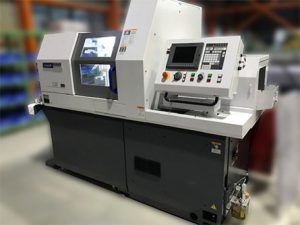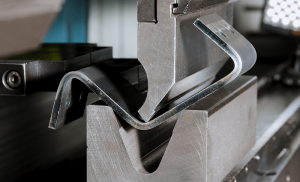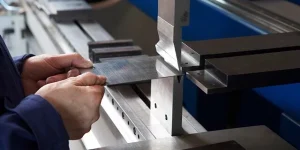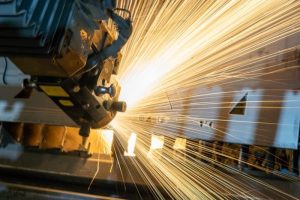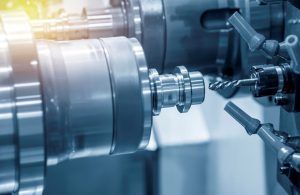Regular maintenance, including routine cleaning, calibration, and software updates, can boost CNC productivity by up to 25%, ensuring machines run at optimal efficiency
Daily Cleaning and Lubrication
Daily cleaning and lubrication are the foundation for maximal CNC machine life and productivity. In fact, up to 70% of machine failures can be averted by a proper maintenance routine, meaning one can save valuable time, money, and resources by avoiding unscheduled equipment downtime.
Set a Daily Cleaning Routine
Establish a daily requirement for the employees to wipe down any machinery and remove dust, debris, excess liquids, or any other extra material on the machines. Employees should pay particular attention to the spindle, chuck, and the tool holder. Alternatively, companies can mount submersible cleaning fluids that will clean the machines automatically. Clean machines are not only efficient machines but they will last longer.
Use the Proper Lubricants
According to Aman , different parts of any given CNC machine should use different types of oil. For instance, pneumatic parts of the machine should be lubricated with light grease or oil, and other parts should receive 90-weight gear oil. All lubricant application should be conducted as per the director of the manufacturer. The proper lubrication of a CNC machine implies a reduced friction, wear, and the heat that is part and parcel of its application.
Establish Strict Lubrication Routines
A given CNC machine should be virtually in a state of constant lubrication. While this task should be conducted with the guidelines of the tool manufacturer in mind, it should also be based on the magnitude of real-world machine usage. Some of the key areas that require to be lubricated include the machine’s roller guides, slide rails, ball and roller screw assemblies, and the guide trucks.
Monitor the Levels and the Quality of the Lubricants
The vast majority of lubricants lose their industrial applicability over time periods as short as 30 days or develop contaminants. Monitoring the lubricants used and their levels of adhesion will ensure that the lubricant will be at optimal levels at all times and maintain the CNC machine performance levels that the business has come to rely on.
Training the Staff
The competence of the staff that works with CNC machines is a starting point. Well-informed staff should be able to identify the source of a problem well before an error is made. One of the key characteristics of well-trained staff is their commitment to the daily lubrication and cleaning tasks.
Maintain Records of Lubrication and Cleanings
Machine health can be monitored through detailed records of a CNC machine’s periodic cleaning and lubrication. One of the benefits of such a log is that it can indicate a problem that might become repetitive and chronic downtime in the near and foreseeable future. If machinists are able to able to track any issues that occur with every time a given part is lubricated or cleaned, they will be able to track those issues in other machines and anticipate those problems to avoid costly and unscheduled downtime.
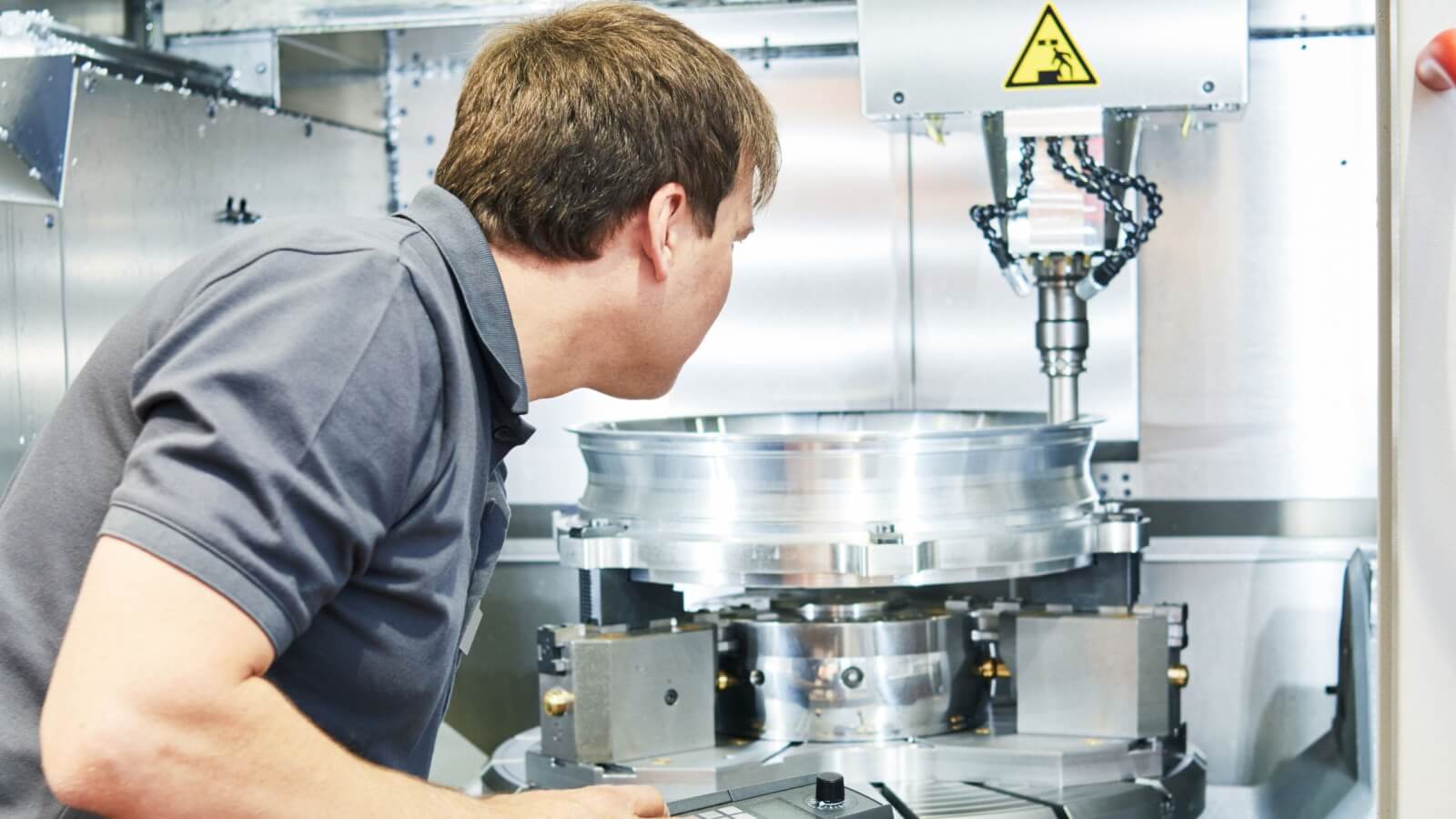
Regular Inspection and Calibration
Regular inspection and calibration of CNC machines is the cornerstone of maintaining high precision and efficiency of production. The general experience shows that implementing these practices alone can increase machine performance by up to 20%, the measure by which the machines maintain their accuracy and do not produce costly errors.
Develop a comprehensive inspection checklist
Create a detailed list of what components should be inspected as part of the routine. The inspection should cover all mechanical components – such as spindles, axes, and tool holders – and all accompanying systems, such as electrical and other systems and software function. The focus should be on looking up what can be worn down, knocked out of alignment, produce an error, and generally stop working well.
Schedule the calibration
Calibration is necessary to ensure that the CNC machines operate precisely by the specifications of their product. Establish a schedule for the calibration of the machines according to the manufacturer’s recommendations and the intensity of usage. The calibration usually takes a few days and is done by adjusting the CNC to produce precise resold. It is necessary for the production of high-quality products time after time.
Use the advanced diagnostic instruments
Implement cutting-edge diagnostic tools that can provide precise data on conditions on which the machines operate. Examples may be laser trackers, ball bar systems, or vibration analyzers which can precisely measure the access of machine components and indicate which need adjustment. It can provide an efficient means of early detection of the problems to stop them before they further develop.
Implement corrective actions like lubrication
Service the points of failures right when they are discovered in the process of diagnostics. Realign the components knocked out of the whack or install new units replace the old ones to fix issues as they arise. Instances abound when failure to do so can lead to costly repairs and parts replacements necessary to reinstall the machine which has seriously degraded.
Train the operators in the inspection
The ability to inspect the machines does not have to be limited to the team of specialized technicians. The workers know how to run the machines should also know about how to inspect them properly: spot the early signs of trouble, or rather that the measures should be taken before the machines are broken. It is essential to ensure that the machines are not simply run poorly but maintained poorly.
Document all repair activities
Keep accurate records of every operation in the lifetime of the machine – the adjustments, or calibrations, the manufactured parts and the faulty parts they replaced. The records can provide vital performance data that can be analyzed to determine the steps to be taken next and to prove all required information during quality assurance audits.
Tool and Cutter Maintenance
The condition of tools and cutters directly affects the efficiency and lifespan of CNC machines. Reducing tool-related downtime by up to as much as 25% and directly contributing to improved productivity, proper tool maintenance is an essential aspect of facility management. This paper aims to provide an overview of the best tool maintenance practices and possible ways in which they can be implemented.
Follow Regular Inspection Routines
Check every tool and cutter at every change, inspection, or end of a shift, and look for any sign of wear. Develop a regular schedule that arranges inspections around every two weeks, but with some filling down of knickpoints in the middle. Measure the gauge length of overture to evaluate the tool’s machining ability and ensure that they are below the maximum spec.
Sharpen or Replace Tools When Required
Make sure that all tools are sharp enough to produce cuts of the highest quality, as improper sharpening can adversely affect the tool’s lifespan. To ensure that tools are in proper condition, develop a sharpening schedule determined by the hardness of the materials machined and how much they are used. Whenever a new tool has become sufficiently worn, promptly replace it as failing to do so can damage the machine or ruin the workpiece.
Never Forget to Clean After Use
Execute cleaning procedures after every work operation to mitigate the effects of residues that tend to cause rust or corrosion. Make sure that the cleaning solution is undiluted to prevent damage to the tool’s composition or further enhance the effects of corrosion, and clean gradually to ensure that all items remain properly in place.
Storage Techniques Always Matter
Improper storage in damp or dirty areas can easily ruin tools. Consider using labeled racks or drawers to reduce the risk of contamination. Individual racks or drawers can also help prevent tools and cutters from interacting with the environment and corroding. Keep every storage rack away from humidity or damp areas for better results.

Regularly Update Software and Firmware
Updating CNC software and firmware is vital to enhance the performance of the machine and operational efficiency. These updates often include critical improvements, bug fixes, and new features that can reduce cycle times and increase function. Below is a list of the best practices for updates.
Establish a Regular Schedule
Create a normal schedule for checking and implementing software and firmware updates. This could be weekly or quarterly, depending on the vendor’s release cycle. Staying up to date ensures that you are getting the highest overall performance out of your gadgets.
Check for Compatibility
Before updating, make sure the software and firmware are well matched with your existing hardware and peripherals. This will avoid problems with compatible versions of new software and machines. Checking for compatibility versions helps prevent device failure and hours of downtime.
Back-Up Data Before Applying Updates
Always backup your current sets and programs before commencing. Back-up is a precautionary measure so you can return your vintage settings if the new release is wrong or causes you any problems. Not backing up also promotes data loss risk.
Test the updates in a controlled environment before deployment
Test your new updates in a controlled environment if possible before deployment. This will help identify any existing issues or changes that need to be made before going out to production. Testing is a necessary risk of eliminating the need to deploy software directly to the machines in production.
Train your staff after installation on new functions or things that have changed.
Once you’ve removed your updates, train staff on how to use new functions or upgrades. This works to maximize the benefits gained from updates. Training enables each software assistant to obtain the full release.
Monitor CNC machines after the update and make the update work.
Keep track of your CNC machines after the update to ensure that they are still working properly. Monitoring helps you catch problems quickly and solves problems created by automation immediately.
Monitor Machine Health
Health monitoring of CNC machines is a critical process to ensure that these tools work with peak efficiency and do not experience unexpected breakdowns. A proactive approach, implementing advanced diagnostic tools and tracking methods to minimize the downtime of machines and operate them at the most optimal levels possible, can even reduce the amount of necessary downtime by as much as 30%. The following methods can be considered as the most effective approaches to this task.
Vibration analysis
Vibration analysis can be used to determine the abnormal behavior of machine operations, which can indicate serious problems in the system’s functions. Tools, also known as vibration sensors, designed for this purpose are capable of detecting irregular patterns in the vibration of machinery function. Early detection of these patterns allows for immediate corrective actions of the most critical part of predictive maintenance as it allows engineers to track the problem before it had the chance to do significant damage to the machinery or even lead to failure, in the long run, causing downtime.
Thermal imaging cameras
Thermal imaging cameras are used to monitor the thermal profile of CNC machines. Since overheating is caused by excessive friction, misalignment, container rotate, or ultra-low humidity among other detrimental factors, hotspots in the machinery’s operation can be indicative of its necessity for maintenance. Hotsposts can cause the most damage to the machine and are critical in their operations.
Oil analysis
Regularly testing the analysis of oil in the machinery can provide data regarding the component’s status. Checking the debris and chemical composition of a machine’s oil can allow the engineers to determine its current status. The information can be gleaned from a non-invasive source instead of disassembling the machine. Being part of predictive maintenance, the system is critical.
Acoustic monitoring
Using special acoustic monitoring tools to monitor the sound of their machinery, CNC machine operators can listen to aberrational data that cannot be seen by humans. High frequency, low frequencies, scraping, etc. of sounds, alarm engineering. Acoustic disorders of components may not have visible symptoms, but they are responsible for 30 to 40% of work value.
Proper data solution management fixes the issues in clusters of machines in a plant. The ad hoc approach of fixing an issue when it appears rather than when it is scheduled can improve the work of machines and improve their lifespan. However, it is necessary to make data processing by an expert. In conclusion, CNC machine monitoring can only help work if the monitoring team is qualified.
Operator training
Another method to ensure that the tools operate at their maximum efficiency is by training the operators. Machine operators and factory workers should be prepared on how to use the new monitoring tools and how to read the data properly. If the workers know how to identify the times their machinery is performing suboptimally, they are further equipped to make data-driven decisions to fix their machine. Decision-making should be approached from the standpoint of checking for unusual occurences and subsequently scheduling an appointment with the engineer.
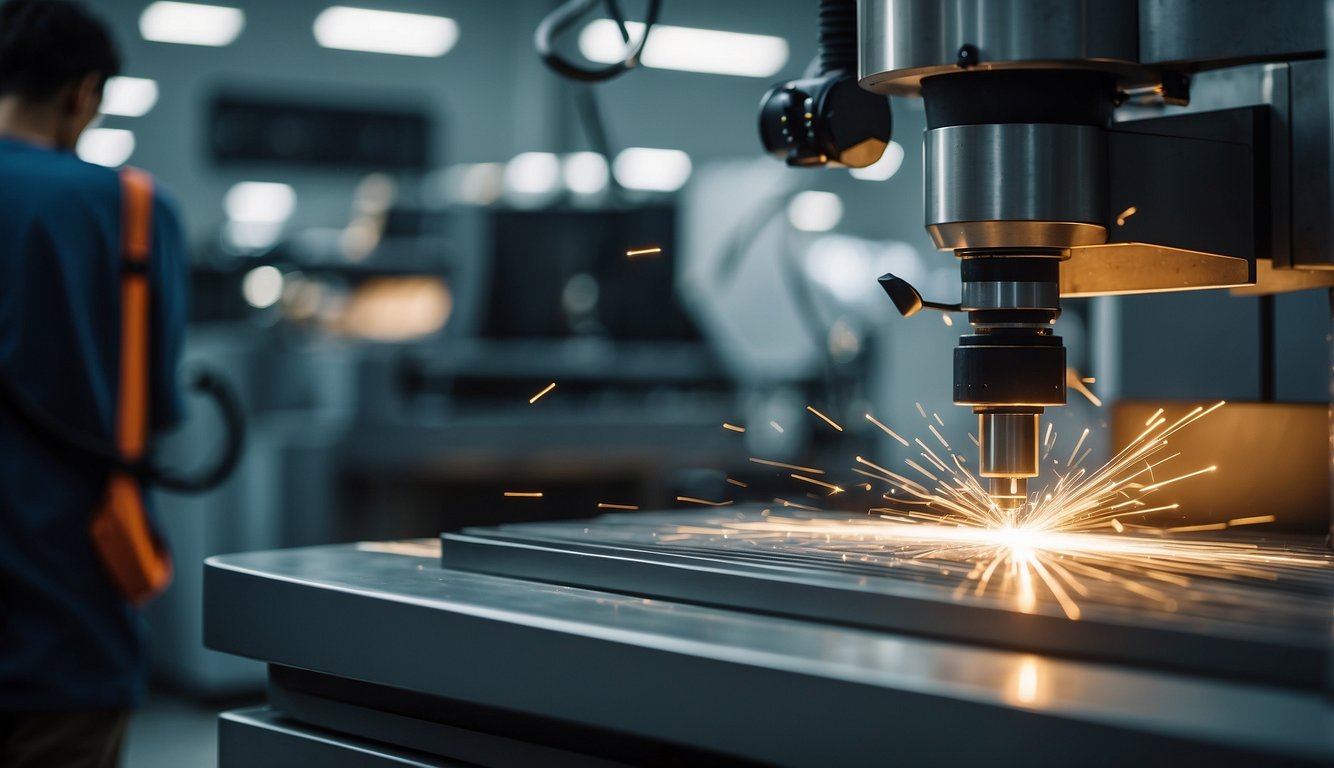
Train Employees
Training the staff effectively is a key strategy for making CNC machinery as efficient as possible. A trained workforce is not only more efficient in operating machinery, they are also more informed in how to ensure the proper functioning of the same, which can cut machine downtime by half.
Developing training programs
The training should be extensive, and cover all aspects of the operation of the CNC. It should range from some very rudimentary handling of the machine to complex programming and handling of more complex machinery. There should always be a strong theoretical component, but also some practical application. A trained operator is someone who understands the machine they are working with, and this would be aided with practical time, in which they can familiarize themselves with the machinery.
Safety training
It is of course, mandatory that a solid component of training should be reserved to safety issues. Not only must the operators be safe for themselves, as bad operation can lead to accidents, they must also understand that correct operation of the machine ensures constant good performance. They should be trained through regular drills and event based issues, to know about all newly discovered safety issues and how to handle the same.
Use simulation
It could also benefit the company to use simulations too. They can introduce certain rare and unlikely risky operations that cannot be risked to occur in the daily operation of the company. With simulations, one can ensure that those who had to deal with the risky operations have the experience and confidence to conduct whatever operation is needed. This encourages confidence, especially in new and timid operators.
Specialized training
For certain more complex operations, it could also pay off to conduct specialized training. Those types of operations include however are not limited to handling Computer Aided Machinery software, lifting and handling complex parts, and perhaps a lot more diagnostics than a simple operator. The idea of specialization is that your regular staff should just be competent operators, while specialized practitioners can handle the more intricated operations.
Continuous training
Lastly, a company can install an environment in which all the operators actively take part in workshops, webinars and other instances of training, like company based internal training. Even better, they can allow their interested parties to express interest in attending industry conferences. This kind of environment ensures that employees are on the edge of the new discoveries in CNC machinery which can only ensure higher productivity.
Evaluating the success of training
It should always be remembered that training are just tools, but they only have a half effect. To ensure that the training are extremely successful, it is not enough to just get information to the operators, you must also consistently remind them. This is done through yearly evaluations of the knowledge the operators have and by analyzing the effect the training actually had on the trained personnel. Afterwards, such results can be analyzed so that the training programs can be adjusted. Such types of adjustment can only be done through analyzing feedback, and ensures that the training programs remain effective and that the operators retain all benefits of training.


